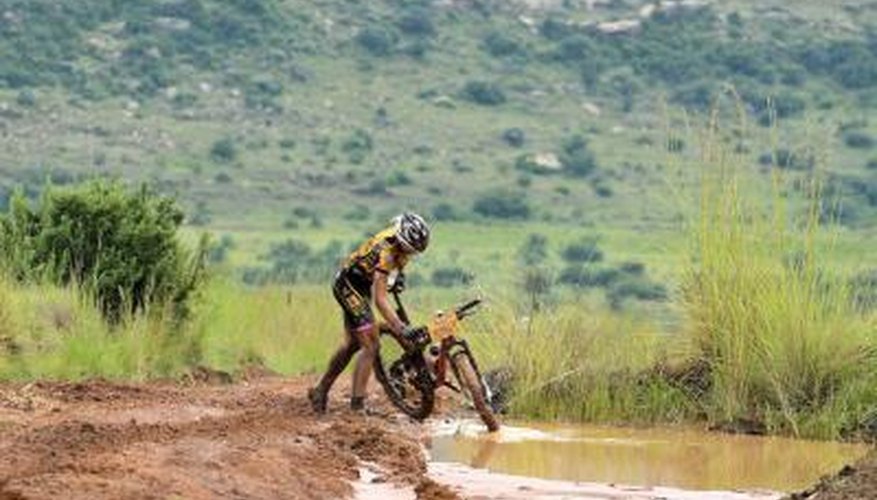Pit bikes and dirt bikes rely on a flow of air over the top of the cylinder head to cool the engine. This is accomplished by using aluminium fins that dispel heat through a rush of cold outside air once the bike moves through its speed range. Since the installation of closed water-filled radiators can be problematic on such small engines, oil coolers have been designed to reduce the oil temperature and aid in engine cooling. Oil coolers bring down the temperature of the oil so the viscosity of the oil does not break down and lose its lubricating qualities.
Place the bike in a stable position, kickstand down and in gear. Place a drain pan under the engine crankcase. Use a socket to remove the drain plug and let the oil drain into the pan. Replace the drain plug and tighten it with the socket.
- Pit bikes and dirt bikes rely on a flow of air over the top of the cylinder head to cool the engine.
- Use a socket to remove the drain plug and let the oil drain into the pan.
Open up your oil cooler kit and examine the angle brackets. If you have purchased a specific oil cooler for your bike, the instructions will suggest reasonable mounting locations. For the side-mounted oil cooler location, use a socket to remove the bottom skid plate.
- Open up your oil cooler kit and examine the angle brackets.
- For the side-mounted oil cooler location, use a socket to remove the bottom skid plate.
Use a socket to remove the oil filter cover. Use an oil filter wrench to remove the oil filter and set it aside. Wipe the oil filter mount clean with a rag.
Attach the kit oil filter mount gasket and adaptor plate to the engine case with the bolts provided. Tighten the bolts with a socket. Stretch the braided oil cooler lines to a nearby mounting location for the oil cooler bracket, leaving enough slack in the lines for easy flow.
Use the universal kit brackets or use pliers to bend your own angle brackets so that the oil cooler will mount to existing bolts on the bike frame or engine structure. Remove the intake fairing on one side to place the oil cooler brackets just inside the intake vent, if so equipped. Place the oil cooler in the bracket. Make sure the oil cooler fins sit parallel to the airstream direction. Tighten the bracket mounting bolts with a socket.
Install the oil line hanger brackets in a suitable location positioned halfway between the oil filter and the oil cooler main bracket. Use your hand to screw on each braided oil line to its respective nozzle, according to the directions -- one line for intake and one line for discharge. Use an end wrench to tighten the line fittings to the oil cooler adaptor and to the oil cooler. Clip the oil lines in their hanger connectors.
- Use the universal kit brackets or use pliers to bend your own angle brackets so that the oil cooler will mount to existing bolts on the bike frame or engine structure.
- Use an end wrench to tighten the line fittings to the oil cooler adaptor and to the oil cooler.
Screw the oil filter back onto the oil cooler adaptor plate by hand-tightening only. If you have removed the side fairing, replace it and tighten its mounting bolts with a socket.
Place the skid plate back into position and screw the bolts in by hand. Tighten the skid plate bolts with a socket. Refill the bike oil crankcase with oil, up to the specified level. Start the bike and check for oil leaks at the adaptor plate, oil filter and oil line joints at the oil cooler.
WARNING
If you can, use existing bolts on your engine frame or engine to mount the oil cooler brackets. For example, you can mount the oil cooler just behind the down-swept part of the front bike frame with a large hose clamp.
